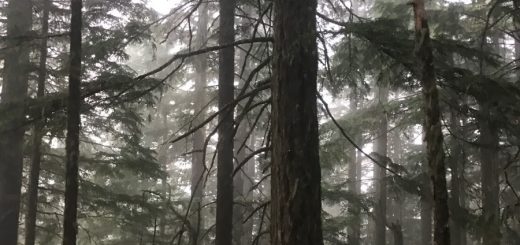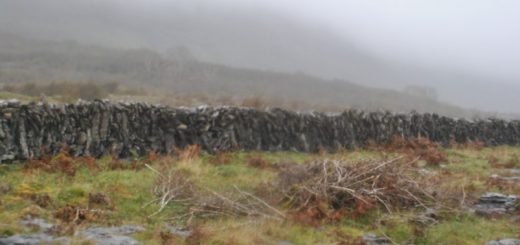Textile Profiles
While doing research for Celtic Fusion’s page on sustainability, I compiled a list of information on both commonly used synthetic textiles, and the textiles that Celtic Fusion uses in its designs. Here are the profiles of each fiber:
Synthetic Fibers –
During my process of compiling research, I went onto websites like Forever 21, H&M, and Primark and looked at what the majority of their products are made from. The vast majority of clothing I found to be created entirely from synthetic fibers; the main three being:
Polyester –
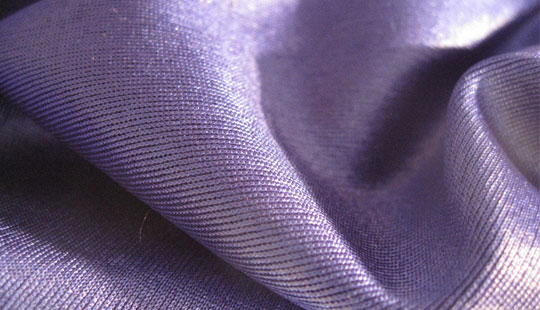
Polyester fabric
Image source – http://www.washerdryercomboz.com/washing-polyester-the-right-way/
- Made from carbon-intensive processes (derived chiefly from petroleum)
- 70 million barrels of crude oil each year are required to meet the needs of the polyester industry
- Cannot be dyed using low-impact or natural dyes
- Production causes garments to shed microfibers that leach into ocean and water supplies
- Not biodegradable
Nylon –

Nylon Fabric
Image source – https://www.diffen.com/difference/Nylon_vs_Polyester
- Requires three times the amount of energy as cotton
- Results in the release of nitrous oxide
- Not suited to natural dyes or low impact chemicals
- Not biodegradable
- Created from polyurethane
Acrylic –
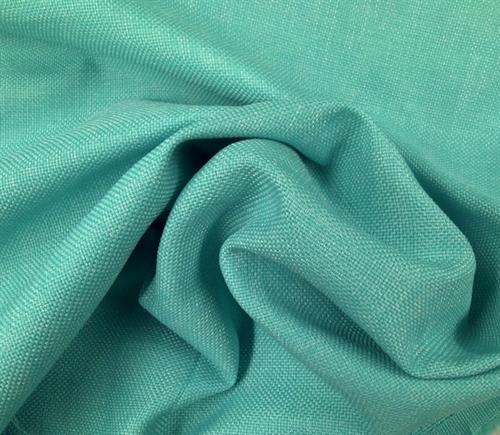
Acrylic Fabric
Photo source – http://www.dustymars.net/acrylic-fabric/
- Made from acrylonitrile – a carcinogen and mutagen that targets the central nervous system
- Extremely toxic to those working in production factories
- Not biodegradable
- EPA states it may cause cancer when in close contact for extended periods of time- similar effects to cyanide
Pollution and excessive resource use aside, the chemical processes through which these materials are made are quite staggering given the fact that the fibers are in contact with our skin day and night. These fabrics are used to create anything from underwear to bed sheets to couch cushions. On top of this, synthetic fibers can not take to natural dyes, so it is essential to dye them using equally, if not more, toxic dyeing materials.
Synthetic Dyes –
- Often use formaldehyde-based dye fixing agents
- React with common disinfectants and create carcinogenic by-products
- Presence of synthetic dye in water prevents penetration of sunlight – when water makes its way into soil, it harms soil porosity, lowering the productivity of soil
- One of the most chemically intensive industries on earth – more than 8000 different chemicals are used in the process.
- Average textile mill uses about 1.6 million liters of water in dyeing process every day.
- Estimated that 17 – 20% of industrial water pollution is a result of textile dyeing
- Water waste contains sulphur, vat dyes, naphthol, nitrates, chromium compounds as well as heavy metals like copper, arsenic, lead, mercury, and more.
- Waste interferes with the absorption of oxygen into water – which is essential for marine life
- Incredibly toxic to workers
Sources –
Claudio, Luz. “Waste Couture: Environmental Impact of the Clothing Industry.” Environmental Health Perspectives, National Institute of Environmental Health Sciences, Sept. 2007, www.ncbi.nlm.nih.gov/pmc/articles/PMC1964887/.
Natural Resource Defense Council. “Fiber Selection: Understanding the Impact of Different Fibers Is the First Step in Designing Environmentally Responsible Apparel .” Clean By Design, Apr. 2012, doi:https://www.nrdc.org/sites/default/files/CBD-Fiber-Selection-FS.pdf.
Chequer, Farah Maria Drumond, et al. “Textile Dyes: Dyeing Process and Environmental Impact.” Textile Dyes: Dyeing Process and Environmental Impact | InTechOpen, InTech, 16 Jan. 2013, www.intechopen.com/books/eco-friendly-textile-dyeing-and-finishing/textile-dyes-dyeing-process-and-environmental-impact.
Celtic Fusion Natural Fibers –
Jute –

Jute plant in standing water
Scientific name: Corchorus L
Family: Tiliaceae
This plant thrives in hot, humid environments and requires a monsoon climate in order to receive the standing water it needs to thrive. Ideal temperatures are 20 – 40 degrees celsius and it requires at least 70% humidity. About 40 pests are known to target jute, however, these pests primarily attack the leaves of the plant which are not of use to jute farmers and therefore have little need for the use of pesticides.

Jute in the process of retting
Photo source: https://theswatchbook.offsetwarehouse.com/2015/04/14/why-is-jute-sustainable-ecofriendly/
Textiles are produced from this plant by separating the outer skin of the plant’s stem. This is done through a process called ‘retting.’ When fibers are separated from the plant they create single strands that stretch 2-3 meters long and are woven together to create fabric. Because of this, each jute plant has a very high yield for textiles.
Jute is, without question, a more sustainable choice than any synthetic fiber on the market. Reasons for this are as follows:
While it’s victory over synthetic fibers is universally accepted, there is more to the question of sustainability than just “better.” Many studies have proven jute-farming to be an environmentally beneficial practice. First, jute has been proven to absorb CO2 from the atmosphere. Jute plants absorb on average 7302.38 tons of carbon from the air per year and emit 5309.91 tons of O2 into the atmosphere in the same time frame. In countries like India and Bangladesh where jute production takes place, crops that quickly absorb cO2 are highly needed due to the lack of forestry that is quickly becoming a concern.
Soil fertility is another concern when in the business of mass producing any kind of fiber. Because jute has a high yield and is biodegradable, it is important to consider what the affect of the decomposition of those fibers will have on soil. The process of harvesting jute leaves the plant’s root in place in the soil, the plant also sheds leaves during its life cycle that are composted into the soil. The nutrients that the crop’s waste fixes to the soil are as follows:
Estimated amounts of N, P, and K in fibre, sticks and leaves as % of total dry weight of products
| Type of Product Nutrient | Dry Fiber (%) | Dry Sticks (%) | Dry Leaves (%) |
| N | .43 | .21 | 3 |
| P205 | .19 | .09 | .37 |
| K20 | 1.65 | .75 | 2.2 |
Source: IJSG, 2003 and Dempsey, 1975.
Because this crop is farmed for textile rather than consumption, nutritional values are not of concern, and therefore fertilization of the crop is not required for a profitable harvest.
Potential setbacks –
First and foremost, the climate that jute thrives in is not suitable for it to be a local crop in the Western world. This is of concern because it means that fabric consumption requires serious exportation…which is synonymous with fossil fuel use. In the same way, this requires trade with countries that have less emphasis on workers rights. Unfortunately, this makes it easy for companies to have sustainable textiles while still enforcing slave-like conditions on workers in order to keep prices low for customers who are conditioned for ‘fast fashion’ type prices.
Jute does also need a substantial amount of standing water in order to thrive. While monsoon climates allow for this, the effect of climate change on the weather and potential droughts may make jute a sustainable crop for a very short amount of time.
sources –
“The Impacts of Jute on Environment: An Analytical Review of Bangladesh”. Accessed November 20, 2017.
“Eco-Friendly Fiber: Jute | Earth Divas’ Blog.” Accessed October 17, 2017. http://earthdivasblog.com/2010/12/29/eco-friendly-fiber-jute/.
Stirling, Graham, Helen Hayden, Tony Pattison, and Marcelle Stirling. Soil Health, Soil Biology, Soilborne Diseases and Sustainable Agriculture: A Guide. Csiro Publishing, 2016.
Unbleached, Handspun & Handwoven (Khadi) Cotton –
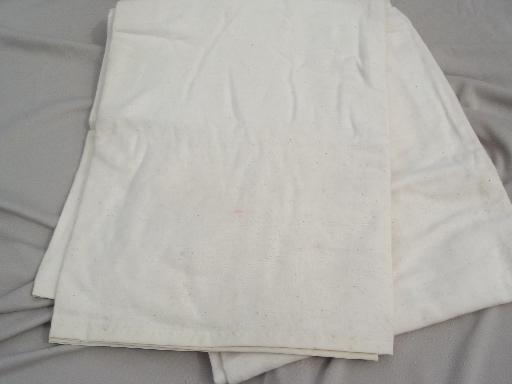
Unbleached cotton
Image source: http://www.laurelleaffarm.com/vintage-flannel-camp-blankets-natural-unbleached-cotton-sheet-blankets-Laurel-Leaf-Farm-item-no-u429196.htm
Cotton is a crop that is constantly debated for both its agricultural processes as well as the methods used to extract the fiber and create fabric with it.
Propagation –

Cotton plant
Image Source – https://plantvillage.org/topics/cotton/infos
Cotton is made up of four species: Gossypium hirsutum, Gossypium barbadense, Gossypium arboreum, Gossypium herbaceum.
Family: Malvaceae, perennial shrub
G. Herbaceum makes up for 90% of the world’s cotton market.
This crop is best grown in desert conditions – requiring an average temperature of 34 degrees celsius to best thrive.
Notable pests: Cutworms ( Agrotis ipsilon, Peridroma saucia), cotton aphid (Aphis gossypii), cotton bollworm (Helicoverpa zea), armyworm (Spodoptera exigua).
The agricultural sourcing is something that, upon research, both Regina and I agreed Celtic Fusion could do better with and is now a goal for the upcoming year. Some of the statistics that led us to this conclusion are as follows:
Cotton is highly susceptible to pest pressure, resulting in heavy use of pesticides on conventionally farmed crops. According to the Pesticide Action Network (PAN, 2005),1 “each year cotton producers around the world use nearly US $2.6 billion worth of pesticides.” This makes up for roughly 10% of the world’s pesticide needs, though cotton only makes up for about 3% of the world’s farmland. In the US cotton industry, cotton crops are sprayed on average 8 – 10 times from seeding to harvest.
On another end of the spectrum, GMO cotton in Indian has been systematically harming small farmers who have turned to weed and pest resistant crops. When farmers buy these seeds from large corporations, they cannot save seeds due to patents on the particular varieties. Eventually the prices of the seeds increase to a level that the farmers can no longer afford, pushing them far into debt. In many cases, this ends in their land being claimed as compensation. This creates a phenomenon too tragic and culturally intensive to fully comprehend or explain without dedicating a full study to it. These are known as farmer suicides. Since 1997, 200,000 Indian farmers have taken their lives as a result of losing their land and livelihood.
Organic and conscientiously grown cotton, however, has the potential to have a positive impact on both the textile industry and the agricultural world. Some cotton farms worldwide have successfully removed the use of herbicides and pesticides on their crops and instead have turned to labour as a form of crop management. Because pesticides are no longer present in the fields, workers are able to safely walk through crops and hand-weed as well as monitor for pests. There are still hurdles to be jumped, however, as weeds and pests are only the surface level of crop management. Because cotton is in such high-demand, most farms rely on mono-cropping in order to meet their financial needs. This depletes the soil of nutrients (nitrogen being the main concern) and requires heavy fertilization.
Sources –
“Cotton | Diseases and Pests, Description, Uses, Propagation.” Accessed November 20, 2017. https://plantvillage.org/topics/cotton/infos.
Cooperative Extension Service, The University of Georgia College of Agricultural and Environmental Sciences. Cotton Growth and Development. Accessed November 23, 2017 www.spar.msstate.edu/class/EPP-2008/Chapter%201/Reading%20material/Temperature%20including%20Extremes/cotton_heat_Units1.pdf
Salem Y. Lakhal*, Hamadoun Sidibé and Souad H’Mida. “Comparing conventional and certified organic cotton supply chains: the case of Mali.” Int. J. Agricultural Resources, Governance and Ecology, Vol. 7, No. 3, 2008. Accessed November 23, 2017 Roos, Sandra, et al. “Is Unbleached Cotton Better Than Bleached? Exploring the Limits of Life-Cycle Assessment in the Textile Sector.” Clothing and Textiles Research Journal, vol. 33, no. 4, 2015, pp. 231–247., doi:10.1177/0887302×15576404.
Processing –
The processing that the cotton textiles Celtic Fusion uses goes through is arguably the best possible, that reason being that it hardly goes through any processing at all. Because most cotton in the textile industry is dyed with deep, synthetic dyes, it is necessary for it to undergo an intense scouring and bleaching process.
While recent advancements have created a bleaching and scouring process that is much less chemically intensive (now relying on hydrogen peroxide to lighten the fabric), any action at all to remove cotton fabric of ‘impurities’ is all but unnecessary.

Khadi Cotton
http://www.khadiculture.com/khadi.html
There is a variety of methods employed to produce cotton textiles. However, I am going to focus on khadi cotton since it was the textile I had the most contact with during my internship with Celtic Fusion. Khadi refers to any fabric that is created by hand spinning and weaving with the use of no industrialized machinery.
The production of khadi cotton plays a crucial role in rural economies in India as it creates a product that can be grown from seed and turned into fabric within the same village – a quality that is rare to find in the textile industry. This system provides safe employment that only requires the use of a hand loom and spinning wheel in contrast to operating dangerous machinery. This allows for villagers to live rurally rather than travel to the city to find work in factories and even more importantly, gives people the opportunity to be self employed.
From an environment perspective, khadi is impossible to beat in regards to its impact on the planet. This craft uses roughly 1/18th the amount of water per meter to produce the fabric, does not require any electricity or fossil fuels, and does not generate any waste during the process of spinning and weaving.

Khadi in the process of spinning
Image source – http://www.thehindu.com/in-school/signpost/khadi-indias-wonder-fabric/article5773089.ece
Sources –
http://shodhganga.inflibnet.ac.in/bitstream/10603/11727/10/10_chapter%203.pdf
Sumanas Koulagi. “Khadi Production in India: A Way Forward to a Greener Economy?” Accessed November 12, 2017. sro.sussex.ac.uk/63775/1/Khadi_Production_in_India-5.pdf.pdf
Satrajeet Choudhury* and Vijay Agrawal**. “Rural Economy: Achieving Inclusive Growth through Khadi and Village Industries.” Accessed November 12, 2017. http://www.publishingindia.com/GetBrochure.aspx?query=UERGQnJvY2h1cmVzfC8xMjAwLnBkZnwvMTIwMC5wZGY=

